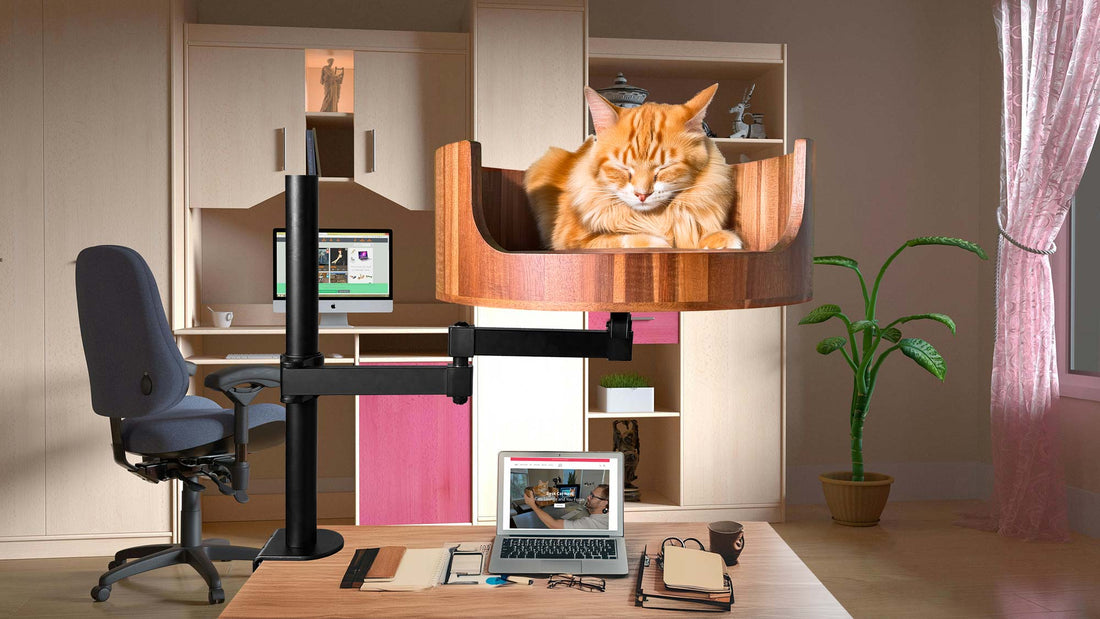
Why Do Cat Vomit After Eating: Common Causes Explained
Share
Have you ever noticed your feline friend vomit shortly after a meal? It's not uncommon for cats to regurgitate their food, but it can be concerning for pet owners. In this article, we will explore the common causes of why cats vomit after eating, and how you can address this issue to ensure your kitty stays healthy and happy.
One of the most frequent reasons why cats vomit after eating is due to eating too quickly. When cats scarf down their food at record speed, it can lead to indigestion and the regurgitation of their meal. Another common cause is hairballs, especially in long-haired breeds. As cats groom themselves, they inevitably swallow a fair amount of hair, which can accumulate in their stomachs and trigger vomiting. Other potential triggers include food allergies, dietary indiscretion, gastrointestinal issues, or even underlying health conditions. By understanding the root causes of why cats vomit after eating, you can take proactive steps to prevent this behavior and ensure your beloved pet's well-being.
1. Overeating or eating too quickly can cause cats to vomit shortly after a meal.
2. Hairballs can also lead to vomiting in cats, especially for those with longer fur.
3. Allergies to food ingredients or substances in the environment may trigger vomiting episodes.
4. Gastrointestinal issues such as infections or parasites should be considered if vomiting is frequent or severe.
5. It is important to monitor your cat's behavior and eating habits, and consult a vet if vomiting persists or is accompanied by other concerning symptoms.
Foreign objects
One common cause of cats vomiting after eating is ingesting foreign objects such as hairballs, toys, or small objects that cannot be digested. When these objects enter the cat's stomach, they can cause irritation and blockages, leading to vomiting. It is essential to keep small objects out of your cat's reach to prevent this from happening.
Dietary intolerance
Cats can develop dietary intolerances to certain ingredients in their food, leading to gastrointestinal upset and vomiting. Common culprits include dairy products, wheat, and certain proteins. If you notice your cat vomiting after eating a particular type of food, it may be beneficial to switch to a food that is free of these potential allergens.
Overeating
Cats may vomit after eating if they overeat or eat too quickly. This can overwhelm their digestive system, causing them to regurgitate their food. To prevent this, consider feeding your cat smaller, more frequent meals throughout the day and investing in slow-feeders or puzzle feeders to slow down their eating pace.
Underlying medical conditions
In some cases, cats may vomit after eating due to underlying medical conditions such as kidney disease, pancreatitis, or gastrointestinal infections. If your cat is vomiting frequently or showing other symptoms of illness, it is crucial to consult with a veterinarian for a proper diagnosis and treatment plan.
Desk Cat Nest FAQ
Why do cats vomit after eating?
Cats may vomit after eating due to reasons such as eating too quickly, eating too much, hairballs, food allergies, or underlying health issues. It is important to monitor your cat's eating habits and consider any potential triggers for their vomiting.
Can using a Desk Cat Nest help prevent my cat from vomiting after eating?
Yes, a Desk Cat Nest can provide your cat with a comfortable and stress-free feeding environment, which may help reduce the occurrence of vomiting. By encouraging slower eating and providing a cozy space for meals, the Desk Cat Nest can aid in digestion and overall digestive health.
How should I introduce my cat to the Desk Cat Nest?
Introduce your cat to the Desk Cat Nest gradually by placing their food and water bowls in the nest and allowing them to explore and become comfortable with the space. You can also try adding some of their favorite treats or toys to entice them to use the nest for eating.
Is the Desk Cat Nest easy to clean?
Yes, the Desk Cat Nest is designed for easy cleaning. Simply remove the food and water bowls, wipe down the nest with a damp cloth, and wash the bowls with soap and water. It is recommended to clean the nest regularly to maintain a hygienic feeding environment for your cat.
In conclusion, investing in a Desk Cat Bed can be a valuable solution for addressing why cats vomit after eating. By providing a dedicated space for your feline friend to relax and digest their meals in peace, the Desk Cat Bed can help reduce stress and anxiety that may contribute to digestive issues. Additionally, the elevated design of the bed can promote better digestion and prevent regurgitation, resulting in fewer instances of vomiting after meals. Overall, the Desk Cat Bed offers a comfortable and practical option to improve your cat's overall well-being and digestive health.



















































